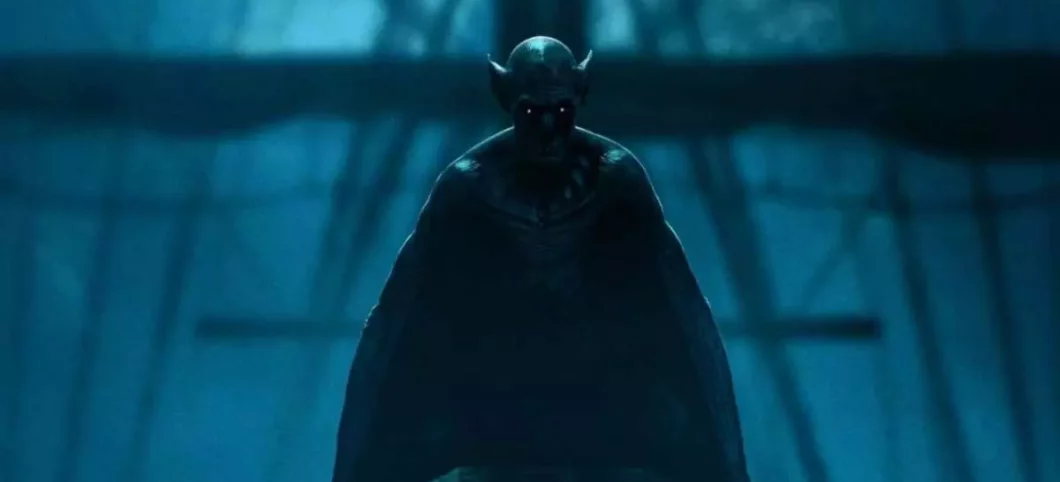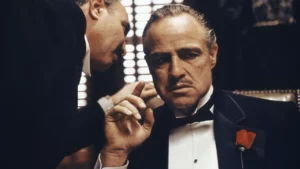
The Last Voyage Of The Demeter is directed by André Øvredal, known for his work on “Troll Hunter,” “The Autopsy of Jane Doe,” and “Scary Stories to Tell in the Dark.”
The Last Voyage of the Demeter Movie Cast:
- Corey Hawkins as Clemens
- Ashling Franchosi as Anna
- Liam Cunningham as Captain Elliot
- David Dastmalchian as Wojchek
- Javier Botet as Conde Dracula
The Last Voyage of the Demeter Movie Plot:
The Last Voyage Of The Demeter is directed by André Øvredal, known for his work on “Troll Hunter,” “The Autopsy of Jane Doe,” and “Scary Stories to Tell in the Dark.” The film tells the story of a crew sailing to England who discovers that they are transporting a very dangerous cargo – Dracula himself. This film is based on a section of Bram Stoker’s “Dracula,” where a crew sails across the ocean only to find that Dracula has stowed away on their ship.
The Last Voyage of the Demeter Review
In The Last Voyage Of The Demeter, director André Øvredal demonstrates his exceptional talent in crafting atmospheric and immersive horror experiences. Known for his previous works such as “The Autopsy of Jane Doe” and “Troll Hunter,” Øvredal has consistently showcased his ability to create tension and suspense on screen. In this film, his directorial prowess shines through as he takes on the challenge of portraying a unique Dracula tale at sea.
What stands out most is the film’s production quality, a significant leap forward from his earlier works. Øvredal masterfully brings to life the eerie and claustrophobic setting of a ship sailing across treacherous waters. Every frame is meticulously crafted, ensuring that the audience is completely immersed in the chilling atmosphere of the narrative. The attention to detail in set design and cinematography elevates the overall viewing experience, making it a visually striking film that commands attention.
The Last Voyage Of The Demeter boasts a cast that delivers exceptional performances, adding depth and authenticity to the characters. Corey Hawkins, in the lead role as Clemens, captures the essence of his character with nuance and emotional depth. His portrayal allows the audience to connect with the challenges faced by his character as he seeks a better life while confronting the horrors of Dracula’s presence on board.
Ashling Franchosi, recognized for her role as Anna in “The Nightingale,” delivers a compelling performance that adds emotional weight to the film. She navigates her character’s journey with skill, drawing viewers into the complex emotions of her role. Liam Cunningham’s portrayal of Captain Elliot is nothing short of incredible. He skillfully portrays the inner turmoil of his character, torn between duty and fear as the crew faces an unimaginable threat.
However, it is David Dastmalchian as Wojchek who steals the show with his captivating and unforgettable performance. Dastmalchian, having a remarkable year in cinema, shines in his role and elevates the entire ensemble cast. His ability to convey a range of emotions and his on-screen presence make him a standout character in the film. Overall, the performances in The Last Voyage Of The Demeter contribute significantly to its success, making it a film that engages both emotionally and intellectually.
The Dark and Unexpected Journey Of The Last Voyage Of The Demeter
Despite initial expectations, The Last Voyage Of The Demeter takes a surprisingly dark and tragic turn. The characters’ depth and the unexpected events that unfold set it apart from typical films of this genre. Corey Hawkins’ character, Clemens, stands out with a poignant scene that highlights the challenges he faced, even after obtaining a hard-earned degree in the late 1800s.
This depth of character development adds layers to the film and engages the audience on an emotional level. Clemens’ journey is not just a physical one but also a psychological battle against the lurking evil. As the crew members confront their worst nightmares and the menacing presence of Dracula, the film delves into the darkest corners of their minds. Paranoia and vivid imaginings run rampant, leading to tension and discord among the crew members. It becomes a gripping study of human nature when confronted with the unknown and the supernatural, showcasing the film’s ability to explore the psychological aspects of horror.
As the characters embark on their perilous voyage, the film skillfully portrays their descent into madness. Their growing paranoia, vivid imaginings, and turning against each other add an intriguing layer to the story. This aspect of the film is both thrilling and captivating, as it explores the psychological toll of their circumstances.
The film takes the audience on a journey through the unraveling minds of the crew members, showcasing the human psyche’s fragility when confronted with the inexplicable. This descent into madness adds a unique and unsettling dimension to the narrative, keeping viewers on the edge of their seats. It’s a testament to the film’s ability to create a sense of dread and unease as it gradually peels back the layers of sanity, mirroring the crew’s descent into chaos.
Dracula’s Enigmatic Presence
However, the portrayal of Dracula in the movie is a bit of a mixed bag. While the visual effects and practical work are well-executed, Dracula’s lack of personality hinders the character. He comes across more as a primal force than a character making conscious choices. The choice to depict him with a constant evil grin feels somewhat cheesy and conflicts with the concept of a primal force. This is a central flaw in an otherwise promising film.
The film succeeds in creating tension and suspense when Dracula remains hidden, but when revealed, his character lacks the depth and complexity that could have made him truly memorable. Dracula’s enigmatic presence, while initially intriguing, ultimately falls short of delivering a fully realized character. The primal and emotionless portrayal, while effective in some moments, feels at odds with the film’s attempts to inject emotion and personality into the vampire. This inconsistency in Dracula’s character is a notable drawback in an otherwise well-crafted narrative.
The Last Voyage of the Demeter Ending Explained
The film concludes by setting up a potential sequel, hinting at a more action-packed and intense encounter with Dracula. It leaves the audience curious about what lies ahead for these characters and the enigmatic vampire. Whether or not this sequel will see the light of day remains uncertain, but it holds the promise of further exploring the intriguing narrative. The open-ended conclusion leaves room for speculation and anticipation, keeping viewers engaged even after the credits roll.
The Last Voyage Of The Demeter, André Øvredal delivers a unique interpretation of Dracula that takes place on the high seas. While the film boasts outstanding performances, a dark and unexpected storyline, and impressive production quality, it falls short in fully realizing the character of Dracula. The film’s repetitive pacing and limited exposure of Dracula may leave some viewers wanting more. However, the potential for a sequel holds promise, and fans of Dracula and unique horror experiences should consider giving this film a chance.
The Movie Culture Synopsis
The Last Voyage Of The Demeter offers a fresh take on the iconic vampire tale, making it worth a watch for those who appreciate atmospheric horror and are willing to embrace a different portrayal of Dracula. While it may have its shortcomings, it leaves room for future exploration and expansion of this intriguing story on the high seas.




